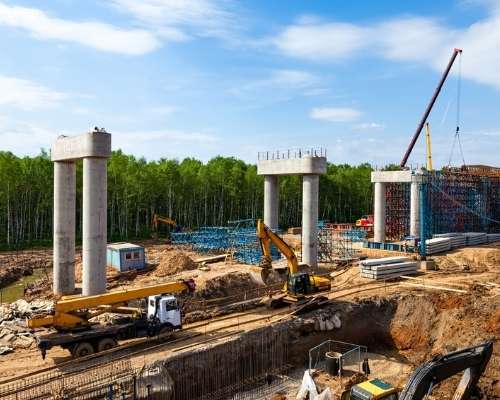5 Minute Read
January 28, 2021
0%
Even winter storms and project delays can’t dash the anticipation of both a comprehensive infrastructure plan and the potential for a national BIM mandate. Here are some of the stories we were following in February.

A fierce winter storm in February brought driving winds, rain, ice and deep levels of snow to many parts of the continental United States. In many cities and communities the storm essentially brought business to a standstill and put pressure on public utilities. Areas not used to such extreme winter weather — and in many cases had not winterized infrastructure — like Texas, saw massive power failures, transportation issues, injuries and even deaths. Construction was not immune to the weather challenge, as contractors across the country (and especially in Texas) had to halt operations and ride out the storm. A recent Construction Dive article noted that “the COVID-19 pandemic has proved itself a sort of training ground for how contractors have been working during the storm.”
The Takeaway: If the last few years have proven anything, it’s that “business as normal” just isn’t a reality anymore. From economic downturns to pandemics to weather, businesses need to be able to pivot when faced with challenges. That’s why more and more contractors are modernizing their operations in order to work more collaboratively and remotely, take advantage of real-time data and workflows and implement analytical tools that provide better insights into the true health of their projects and overall business.

Though the concept of Building Information Modeling, or BIM is not new in construction, and has been implemented more and more by U.S. contractors, there has yet to be a federal BIM standard or mandate. That could soon change, however. In February, the National Institute of Building Sciences held an extensive, executive roundtable of leaders from public and private sectors to discuss a coordinated effort around a U.S. BIM National Standard. The roundtable included participants from the U.S. Department of State, U.S. Army Corps of Engineers, U.S. Department of Veterans Affairs, U.S. General Services Administration and U.S. Federal Highway Administration, along with private sector partners, including Google, Microsoft, Amazon Web Services, and other technology providers. The group heard from BIM experts and leaders in the UK, where there has been a national standard in place for years. The chief goal is to utilize BIM technologies in order to provide more streamlined construction workflows that reduce errors, save time and increase collaboration and productivity.
The Takeaway: A BIM mandate is coming (and that’s a good thing). It’s just a matter of when versus if. More and more contractors are implementing at least some form of BIM into their operations, and that means that will make it harder for companies that have not upgraded their technologies and processes to stay competitive and address modern demands. Consider a technology transformation that includes cloud-based data and workflow management, real-time project management collaboration solutions and cutting edge technologies like BIM, machine learning, robotics and automation, and more to best scale your operations for years to come.

The chances of a multi-trillion-dollar infrastructure package finally being approved are closer than ever. But contractors will have to wait a few more weeks it seems before hearing the full details. President Joe Biden, in February, said that his proposed $2 trillion “Build Back Better” infrastructure and energy plan would be delayed several weeks, as he tackles some other pressing challenges — including a COVID relief package — first. The complete breakdown of Biden’s plan is expected to be revealed to a joint session of Congress.
The Takeaway: Although your first thought might be, “here we go again” with this delay, it does little to affect the chances of a significant infrastructure spending bill passing this year. Momentum has been building for some time now, and elected officials on both sides of the political aisle agree that infrastructure is one of the nation’s top priorities. Of course, there will still be questions and strong debate over how such a bill is paid for, but even a refined package could still create millions of new jobs, address significant health, safety and environmental issues, and prove to be a financial windfall for thousands of contractors across the country. Read how connected construction technologies will fuel infrastructure rebuilding.
Want more takes on news and issues permeating the construction industry? Be sure to subscribe to ourblog for the latest trends and industry news, or visit viewpoint.com to learn how leading-edge technologies can help grow your construction operations.
5 Minute Read
January 28, 2021
5 Minute Read
December 1, 2020
4 Minute Read
October 29, 2020